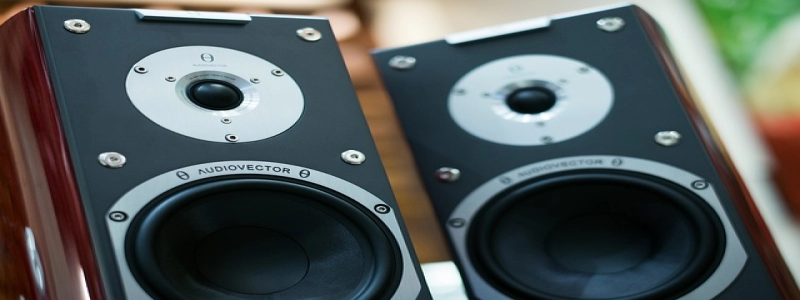USB 3.0 Extender over Ethernet
I. Introduction
A. Definition and Purpose
B. Advantages and Limitations
II. How Does USB 3.0 Extender over Ethernet Work?
A. Components and Setup
B. Data Transmission Process
III. Benefits of Using USB 3.0 Extender over Ethernet
A. Extended Distance Coverage
B. High-Speed Data Transfer
C. Flexibility and Convenience
IV. Applications of USB 3.0 Extender over Ethernet
A. Industrial Automation
B. Medical Imaging and Healthcare
C. Remote Access and Control
V. Considerations when Choosing a USB 3.0 Extender over Ethernet Solution
A. Compatibility with USB 3.0 Devices
B. Ethernet Network Requirements
C. Power Supply and Cable Quality
VI. Conclusion
A. Summary of the advantages and uses of USB 3.0 Extender over Ethernet
B. Considerations for potential users
C. Future prospects and advancements in USB 3.0 Extender over Ethernet technology
I. Introduction
USB 3.0 Extender over Ethernet is a technological solution that allows users to extend the range of their USB 3.0 devices beyond the ordinary limitations imposed by USB cables. By utilizing Ethernet technology, this solution enables long-distance transmission of USB signals while maintaining high-speed data transfer rates.
A. Definition and Purpose
The USB 3.0 Extender over Ethernet is a system designed to bridge the gap between USB devices and Ethernet networks, enabling USB devices to communicate over longer distances. It is particularly useful in scenarios where USB devices need to be placed far away from the host computer, such as in industrial automation, medical imaging, and remote access applications.
B. Advantages and Limitations
One of the key advantages of using USB 3.0 Extender over Ethernet is the extended distance coverage it offers. While ordinary USB cables are limited by length constraints, Ethernet cables can transmit USB signals over much longer distances. Additionally, this solution allows for high-speed data transfer rates, ensuring that USB 3.0 devices can operate efficiently even at extended distances.
However, it is important to note that USB 3.0 Extender over Ethernet has its limitations. The maximum distance that can be covered depends on various factors, including the quality of the Ethernet cables used and the overall network environment. Moreover, USB 3.0 Extender over Ethernet may not be suitable for every USB device, as compatibility issues can arise with certain devices.
II. How Does USB 3.0 Extender over Ethernet Work?
A. Components and Setup
To utilize USB 3.0 Extender over Ethernet, a typical setup includes a transmitter unit, a receiver unit, and Ethernet cables. The transmitter unit is connected to the host computer, while the receiver unit is connected to the USB device. Ethernet cables are used to link the transmitter and receiver units.
B. Data Transmission Process
When a USB device is connected to the transmitter unit, the USB signals are converted into Ethernet signals for transmission. These Ethernet signals are then transmitted through the Ethernet cables to the receiver unit, where they are converted back into USB signals. This process allows USB devices to communicate with the host computer over long distances.
III. Benefits of Using USB 3.0 Extender over Ethernet
A. Extended Distance Coverage
One of the main advantages of USB 3.0 Extender over Ethernet is the ability to extend the distance between USB devices and the host computer. While USB cables typically have a maximum length of 5 meters (16 feet), the use of Ethernet allows for much longer distances to be covered, ranging from 50 to 100 meters (164 to 328 feet) or more.
B. High-Speed Data Transfer
USB 3.0 Extender over Ethernet supports high-speed data transfer rates, ensuring that USB 3.0 devices can operate at their intended speeds even when placed far away from the host computer. This is crucial in applications where real-time data transmission is crucial, such as in industrial automation or medical imaging.
C. Flexibility and Convenience
By using USB 3.0 Extender over Ethernet, users can enjoy flexibility in device placement. USB devices can be located far away from the host computer without sacrificing performance, allowing for a more organized and efficient workspace. Moreover, since Ethernet cables are widely available and easy to install, setting up the extender system is relatively simple.
IV. Applications of USB 3.0 Extender over Ethernet
A. Industrial Automation
In industrial settings, USB 3.0 Extender over Ethernet is utilized to connect devices such as cameras, sensors, and control panels to a central computer. This enables effective monitoring, control, and automation of processes, even in large factory environments where devices are spread out across the facility.
B. Medical Imaging and Healthcare
In the field of medical imaging, USB 3.0 Extender over Ethernet plays a crucial role in extending the reach of devices such as ultrasound machines, endoscopes, and surgical cameras. This allows medical professionals to view and analyze images in real-time, regardless of the physical proximity to the host computer.
C. Remote Access and Control
USB 3.0 Extender over Ethernet is also utilized in applications where remote access and control of USB devices are required. This technology enables users to connect to USB peripherals and devices located in different rooms, buildings, or even across cities. It finds applications in areas such as remote server management, digital signage, and home automation.
V. Considerations when Choosing a USB 3.0 Extender over Ethernet Solution
A. Compatibility with USB 3.0 Devices
Before selecting a USB 3.0 Extender over Ethernet system, it is important to ensure compatibility with the specific USB 3.0 devices intended for use. Different devices may have varying power requirements, data transfer rates, and compatibility with USB extenders. Compatibility tests and reviews can help determine the most suitable option.
B. Ethernet Network Requirements
The performance of USB 3.0 Extender over Ethernet is influenced by the quality and capabilities of the Ethernet network. Users should consider factors such as network speed, cable length, and network congestion to ensure optimal performance and reliability. Assessing the network infrastructure and requirements is crucial before deployment.
C. Power Supply and Cable Quality
Since USB 3.0 Extender over Ethernet requires power for the transmitter and receiver units, it is important to ensure continuous power supply. Users should also choose high-quality Ethernet cables that can sustain long-distance transmission without signal degradation. These considerations aid in maintaining stable and reliable performance.
VI. Conclusion
In summary, USB 3.0 Extender over Ethernet provides a reliable and efficient solution for extending the range of USB 3.0 devices beyond the limitations of USB cables. With its extended distance coverage, high-speed data transfer, and flexibility, this technology finds diverse applications in industrial automation, medical imaging, and remote access scenarios.
When considering USB 3.0 Extender over Ethernet, potential users should assess the compatibility of the intended USB devices, evaluate the Ethernet network requirements, and ensure the availability of stable power supply and high-quality cables. As USB 3.0 Extender over Ethernet technology continues to advance, it is expected to offer even greater capabilities and possibilities in various industries and applications.







